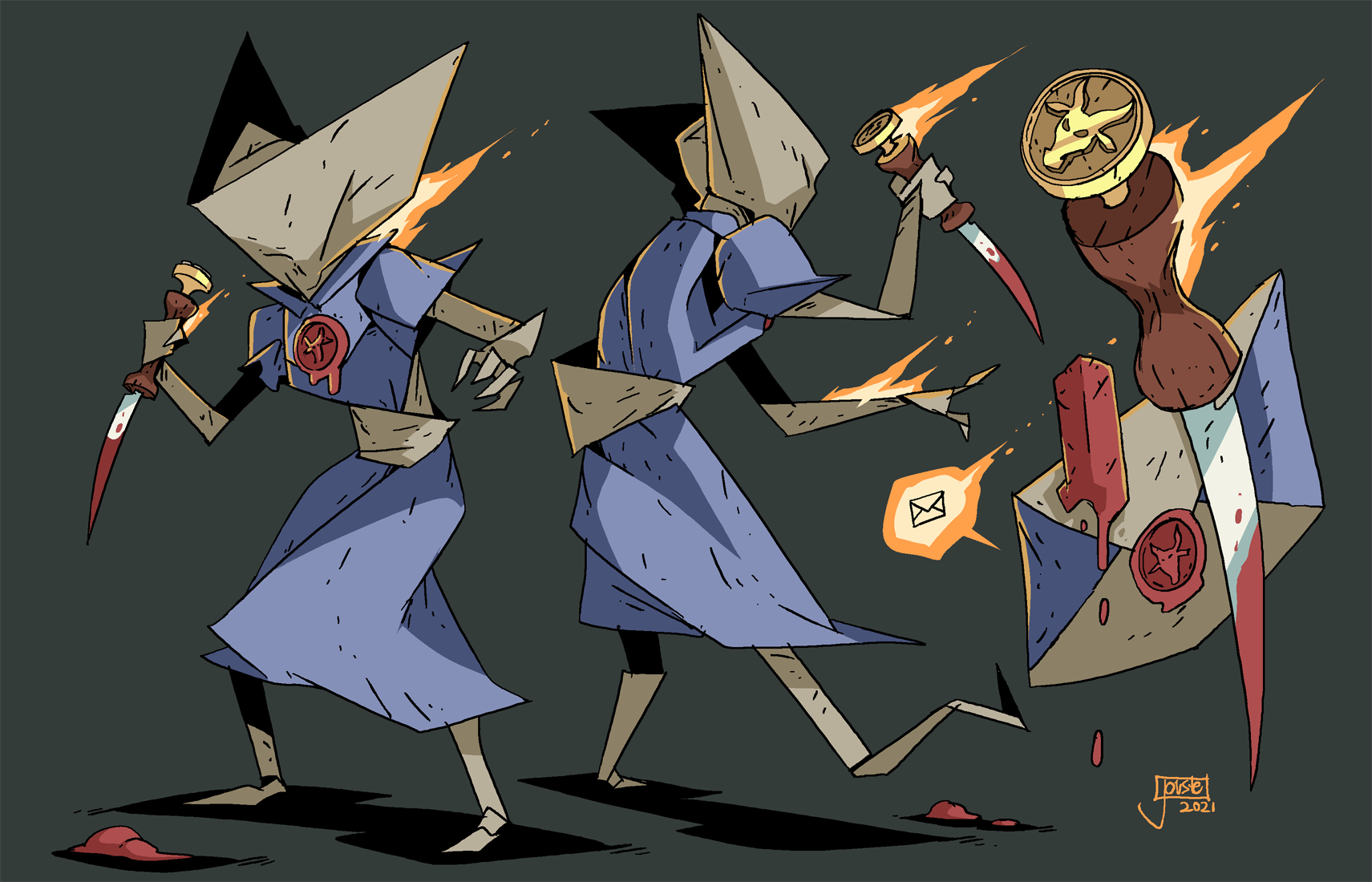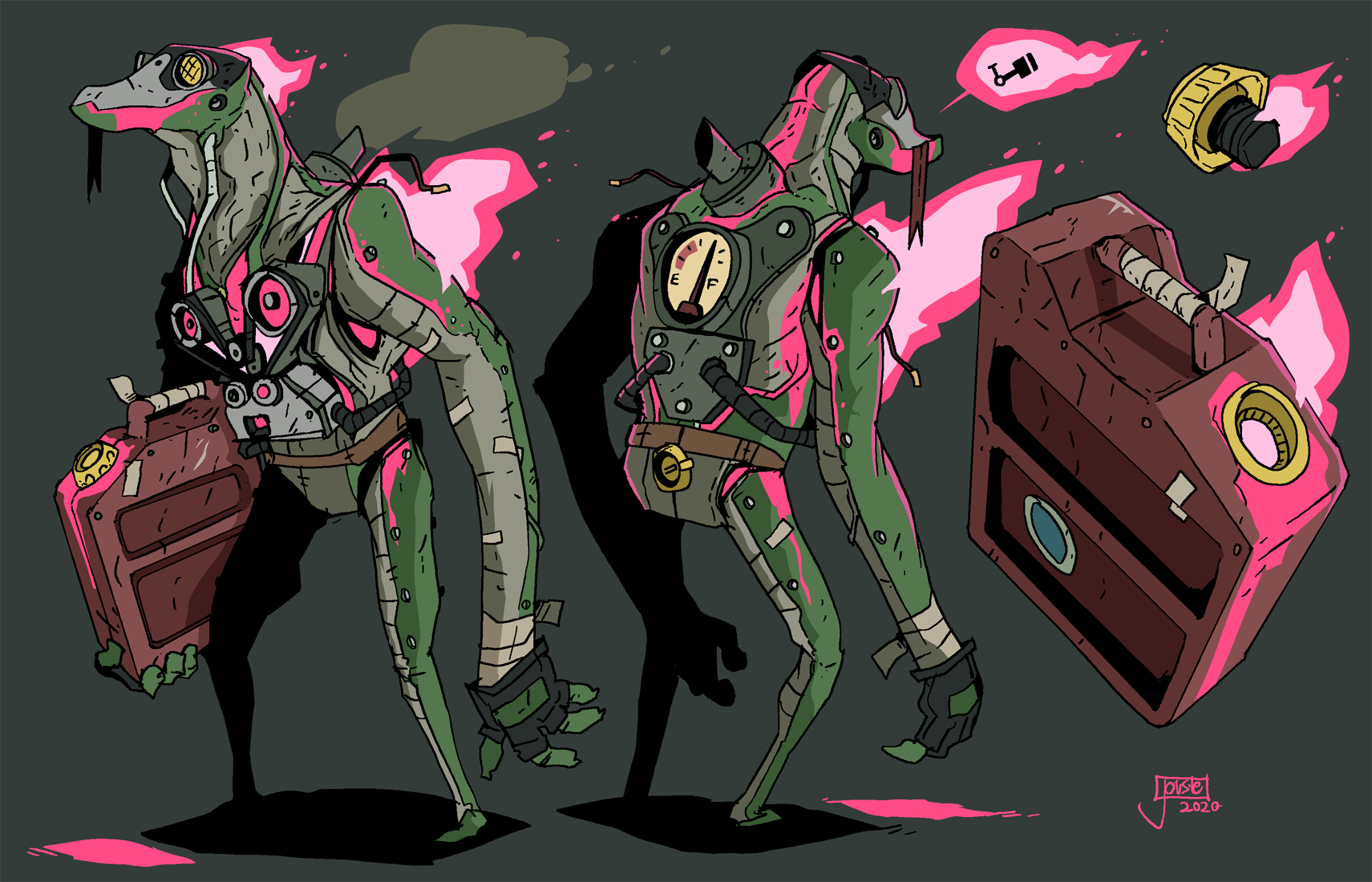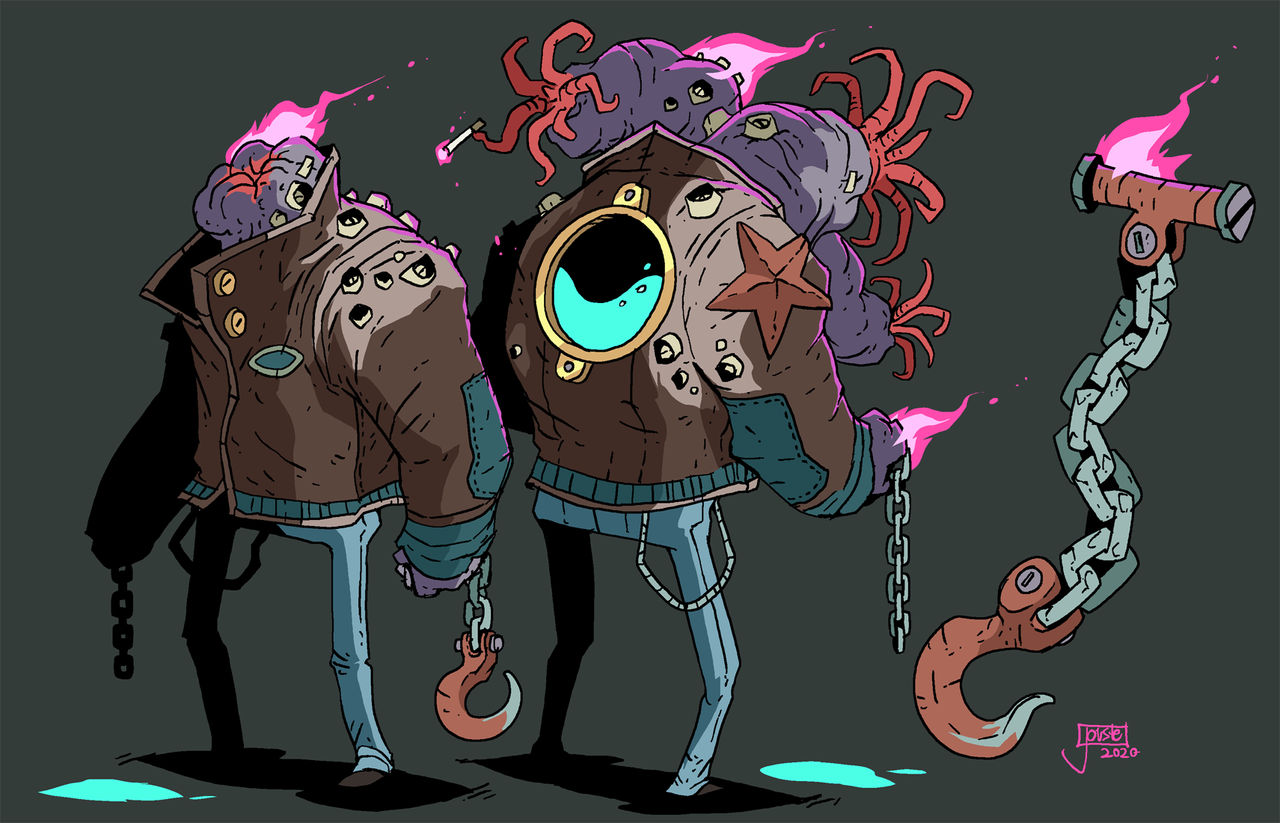Lore TBA, but basically orcs have different weapons from humans, especially melee weapons, and they tend to be rather specialised. Bones are orc currency (not actual bones, domino-shaped coins with holes in them, often braided together on strings for convenience). 1 bone = 1sp for conversion purposes.
Fortes
Most weapons have a forte (F:) listed. If the condition for a weapon's forte is met, roll a d12 in addition to the normal damage die and take whichever result is higher.
Lesser Weapons
1d6 damage, 1 slot. Require one hand.
- Improvised weapons are considered lesser weapons, but do not have a forte, and may require more than one hand depending on their nature.
- Unarmed attacks count as lesser weapons with no forte, and can't deal damage to an alert, steady opponent - you'll need to stun them, knock them down, or catch them unawares to get that damage in. Consider a manoeuvre instead. (More on those in a future post.)
There's only one lesser weapon you can actually buy. A decent knife costs 5 bones; paying more will get you a prettier one.
- Knife - Orcish knives are usually big, heavy, and utilitarian. Not balanced for throwing.
F: Your target is not expecting combat or malice.
One-Handed Weapons
1d8 damage, 1 slot. Require your dominant hand (you can effectively carry a shield or lesser weapon in your off-hand, or leave it free for other purposes). 50 bones each.
- Arc-Sword - A scimitar with most of its weight concentrated towards the sharply curved centre of the blade.
F: You moved into engagement with the target this round. - Boarding Axe - A favourite of marines - an axe with a sturdy spike set into the back of the shaft.
F: Your target is not on stable footing. - Butchermaul - A wicked axe-mace, with multiple blades and crushing heads to hew, hack, and rend.
F: Your target has a bestial body plan. - Cull-Knife - This huge triangular knife has serrated edges and a reinforced, needle-sharp tip.
F: You are not under pressure. - Mace - Any one of dozens of variations on the theme of "injurious weight on a stick".
F: Your target is unarmed. - Shredding Axe - This axe has serrated teeth at its head, spread in multiple directions like barbed wire.
F: Your target is at half hit points or less. - Squaresword - A thick, heavy sword with a hard right angle at the tip and a well-honed chopping edge.
F: Your target has an orcoid body plan. - Straightsword - This sturdy broadsword demonstrates refinement or arrogance, depending on who you ask.
F: Your target is not engaged with anyone but you. - Strife Axe - Ubiquitous in any orc military, this simple axe has a distinctive, slightly forked head.
F: Your target is wielding a manufactured melee weapon. - Wedge Hammer - The head of this short warhammer is set with a wedge to concentrate its crushing strength.
F: Your target is significantly smaller than you.
Two-Handed Weapons
1d10 damage, 2 slots. Require both hands. 100 bones each.
- Coroner's Coil - A length of razor-edged chain between two handles, like a deadly skipping rope.
F: Your target is animate but not alive. - Felling Spike - A spear with its head bent at a slight angle; some models have hooked heads.
F: Your target is mounted. - Harvest Sword - Traditionally, this greatsword has seven teeth placed asymmetrically along its twin edges.
F: Your target has 2HD or less. - Hawk's Talon - Many variants exist of this hooked fork - the Hawk's Talon has three tines and a ripping spike.
F: You are flanking your target. - Meat Hammer - This hammer's broad, spiked head is too heavy to swing in any direction but down.
F: Your target's movement is restricted. - Scour-Axe - Three narrow heads top the shaft of this poleaxe, ideal for punching through hide or metal.
F: Your target is wearing manufactured armour. - Skewer - This barbed harpoon has a weighted head and twisting blades running along its front third.
F: Your target is at least twice your size. - Soulcatcher - A hooked claw on a stick, reputed to be able to drag the soul right out of one's body.
F: Your target has cast a spell or used a magical ability this combat. - Wailer - Takes its name from the awful whistling noise of air passing through the heavy, ventilated axehead.
F: Your target is not combat-trained. - War Sun - This polearm's vicious circular blade is spun by a clever system of weights when the weapon is swung.
F: Your target is unarmoured.
Ranged Weapons
Orcs tend to view ranged combat as unglamorous but necessary - fighting at range isn't craven or dishonourable, but it's strictly a skill where melee combat can sometimes be an art.
- Sling - 1d6 damage, 1 slot. Requires both hands to load, but only your dominant hand to fire. 20' effective range, -2 to hit for each 20' or part thereof beyond that. 10 bones.
Sling stones are functionally free. They stack up to 10 per slot.
F: Your target is within 10'. - Bow - 1d8 damage, 1 slot. Requires both hands. 30' effective range, -2 to hit for each 30' or part thereof beyond that. 50 bones.
Arrows cost 1 bone for a bundle of 5, and can stack up to 20 per slot.
F: Your target doesn't know where you are. - Crossbow - 1d10 damage, 1 slot. Usually requires both hands, but can be fired (not loaded) with only your dominant hand at a -2 penalty. 30' effective range, -2 to hit for each 30' or part thereof beyond that. Takes an action to reload. 125 bones.
Quarrels cost 2 bones for a bundle of 5, and can stack up to 10 per slot.
F: You haven't moved for at least 1 round. - Clicker Crossbow - 1d10 damage, 1 slot. Usually requires both hands, but can be fired (not loaded) with only
your dominant hand at a -2 penalty. 30' effective range, -2 to hit for
each 30' or part thereof beyond that. Carries a clip of 5 quarrels, no need to reload between them, but takes 3 consecutive actions to change clips. 200 bones.
Quarrels cost 3 bones for a clip of 5, and can stack up to 10 (2 clips) per slot.
F: You fired the clicker at the same target last round. - Javelin - 1d10 damage, stacks up to 3 per slot. Requires your dominant hand to throw. 20' effective range, -2 to hit for each 20' or part thereof beyond that. 10 bones for a bundle of three.
F: This is your first attack this combat against this target.
Armour
Heavy armour is a rarity out in the badlands. Every layer of plate you strap on is one more bundle of supplies you can't carry. Still, some warriors want more protection than agility and luck alone can provide.
- Hide Armour - 2 slots, +2 Defence. 50 bones.
- Plated Coat - 1 slot, +2 Defence, stacks with hide armour. 100 bones.
- War-Plate - 3 slots, +6 Defence. While wearing war-plate, each level of fatigue occupies 2 slots. At least 500 bones, and many settlements don't have the necessary tools to make it.
- Shield - 1 slot. Occupies one hand. No Defence bonus normally, but doubles the bonus you get from taking an action to defend yourself. A readied shield also counts as a lesser weapon (with no forte). 50 bones.
Design Notes
"Less armour, more weapons" is the order of the day. The OLOG Marine has abilities that incentivise switching weapons and having a diversity thereof, so I think it's important that different weapons have different qualities.
This post was heavily inspired by this one from Chris McDowall. I especially liked the idea of weapons saying something about their wielders - an enemy orc with a straightsword should hopefully give off a very different impression from one with a hawk's talon.
I still can't make up my mind about how to treat non-orcish weapons. My instinct is to have a table of which orc weapons they map to, but that feels clunky. Maybe I go all-out and write unique fortes for them, too; that gives you an interesting extra incentive to loot human, elf, goblin, and demon foes.









